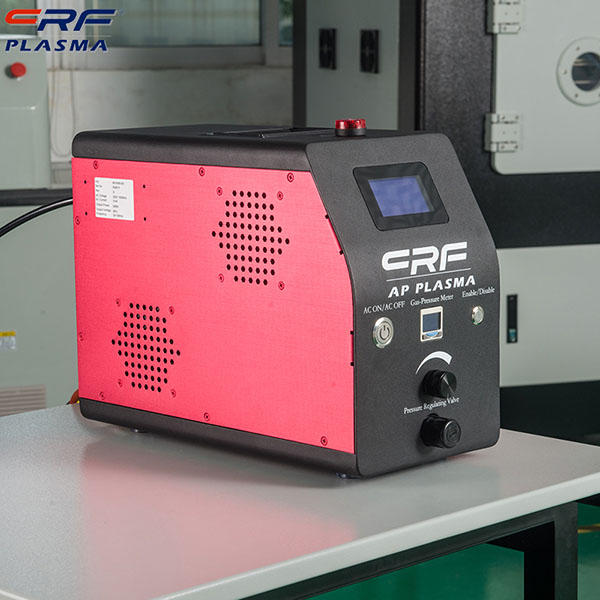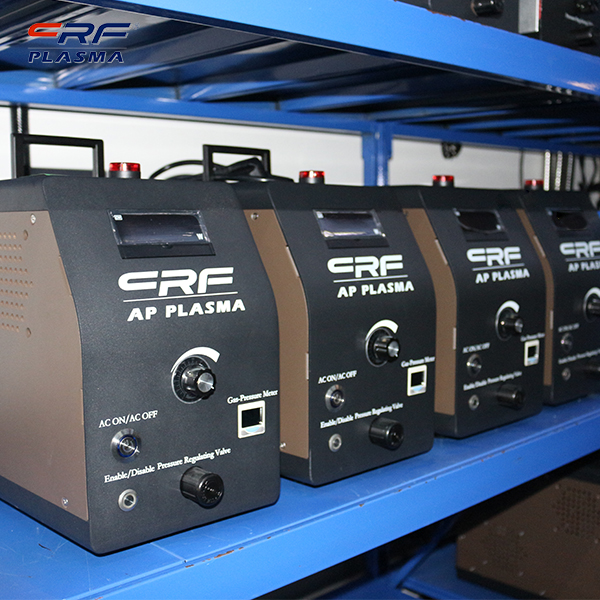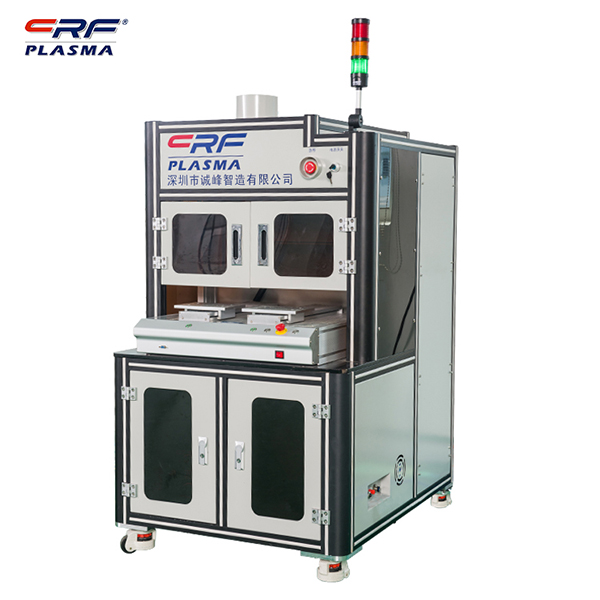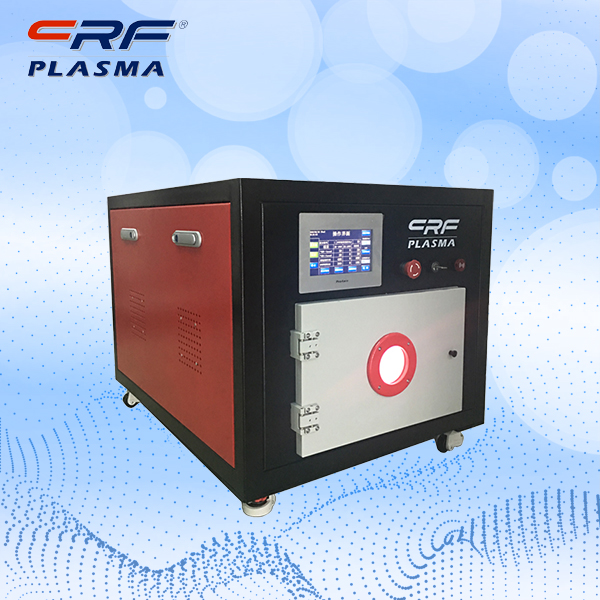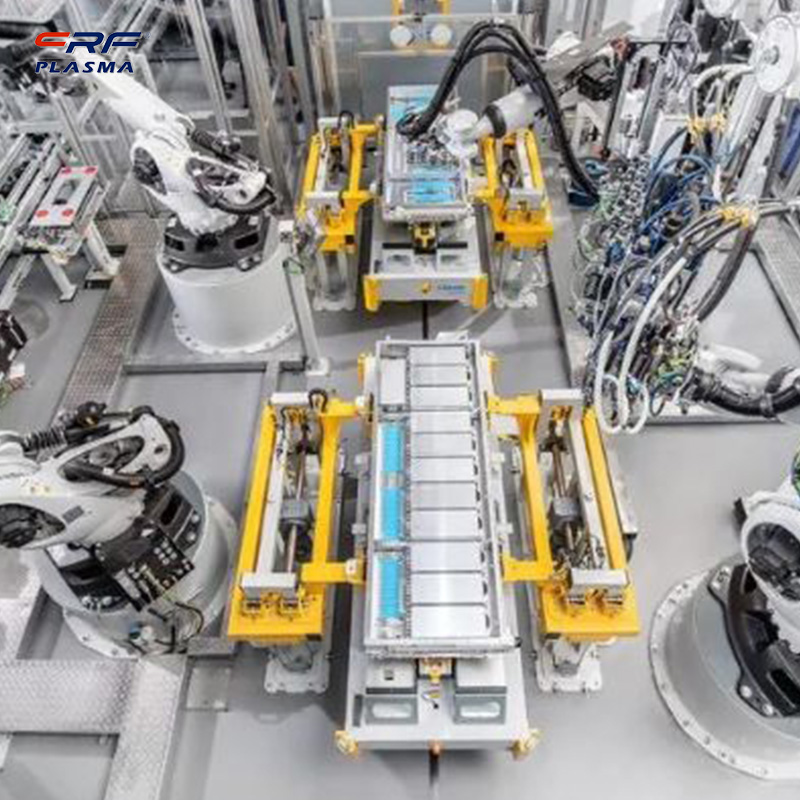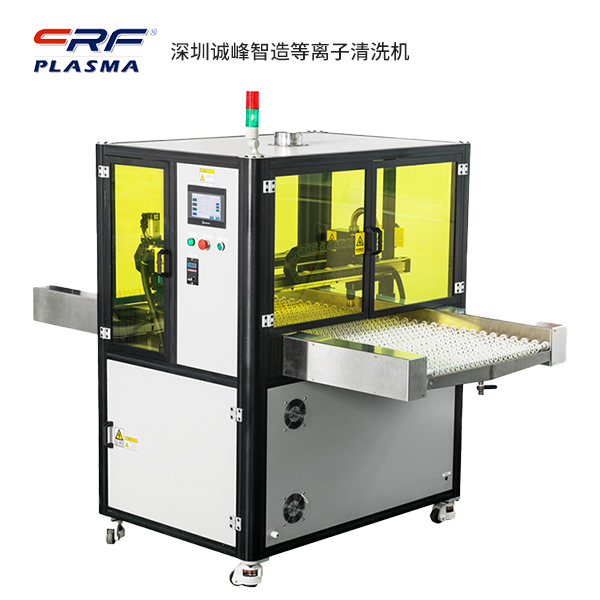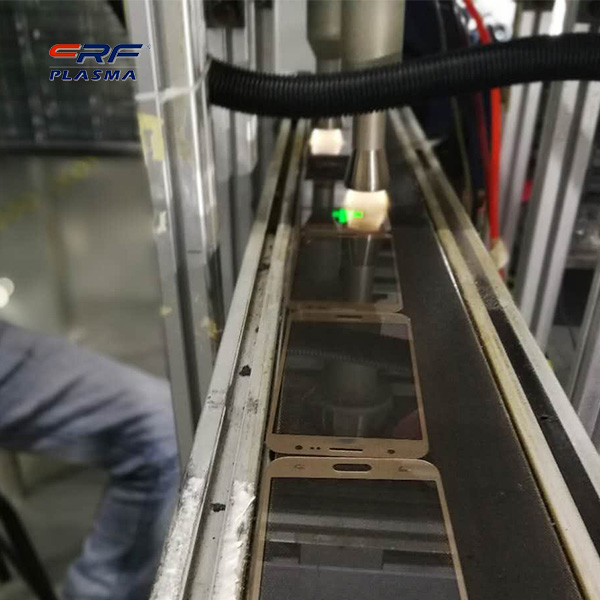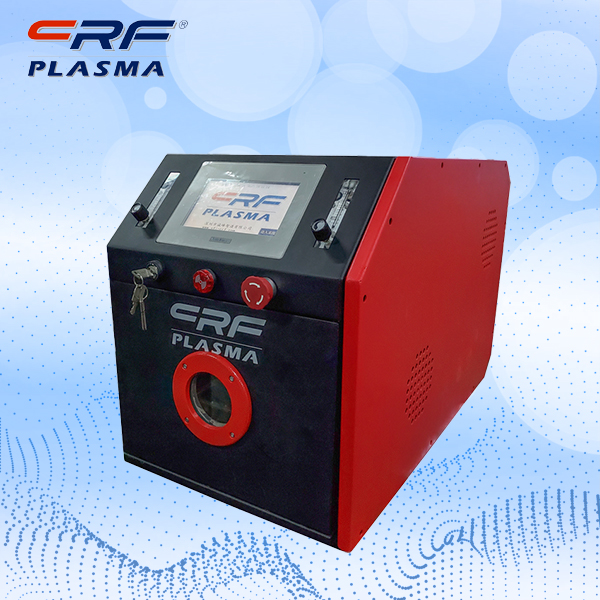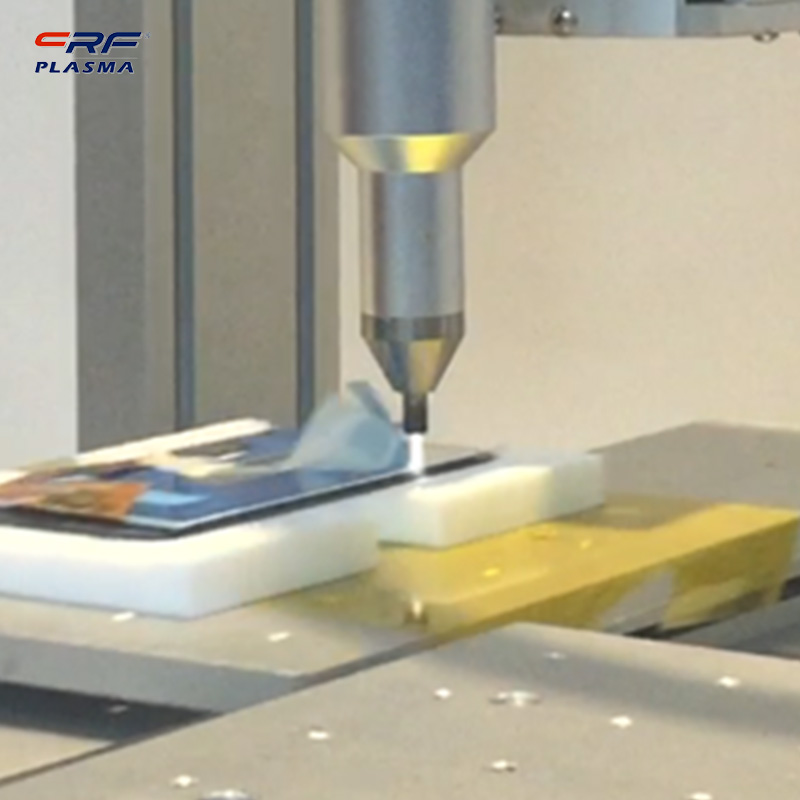
Welcome to Shenzhen Sing Fung Intelligent Manufacturing Co., Ltd.
E-mail:shaobo@sfi-crf.com
Research on the reduction of bacterial adhesion and modification of aluminum sheets after plasma treatment
- Categories:Industry News
- Author:Plasma cleaning machine-CRF plasma plasma equipment-plasma surface treatment machine manufacturer-chengfeng intelligent manufacturing
- Origin:
- Time of issue:2022-04-09
- Views:
(Summary description)Research on the reduction of bacterial adhesion and modification of aluminum sheets after plasma treatment: During the production, packaging and transportation of medicines and food, bacteria in the environment can easily adhere to their surfaces to form a biofilm, causing contamination of medicines and reducing the shelf life of food production, thus affecting people's health. A step in biofilm formation is the adsorption of macromolecules such as bacteria and proteins. If the surface material can prevent bacteria from sticking, it can prevent the formation of biofilms. Polyethylene glycol (PEG) organic compounds are potential preservatives that can effectively prevent bacteria and proteins from adhering. Aluminum is a common packaging material widely used in the food and pharmaceutical industries. If polyethylene glycol is used to deposit a reinforcing film on the surface of the aluminum sheet, it can prevent bacteria from adhering. Surface modification methods include chemical and physical methods. The chemical method is a wet method, and its technological operation is relatively complicated, and chemical reagents that pollute the human body and the environment are required. Low-temperature plasma technology opens up a new avenue for surface modification of metal biomaterials. It is a dry process with the advantages of easy operation and control, no pollution to the environment, and has received more and more attention in the fields of food and biomedicine. The PEG-like structure was grafted on the surface of the aluminum sheet by low-temperature plasma to form a thin film, and a large number of -CH-CH-O bonds were mainly accumulated on the surface; Greatly reduces bacterial adhesion. Plasma-induced reactive species (such as free radicals, etc.) provide a mechanism for the recombination of surface di(ethylene glycol) methyl ether molecular fragments for reaction. The free radicals fall into the newly generated macromolecular network and can initiate a vigorous electronically excited in situ oxidation reaction. The ATR-FTIR analysis of the aluminum sheet macromolecular layer structure after plasma treatment shows that there is a strong absorption peak at 1583.07 cm, which is the characteristic absorption peak of the CO bond in the PEG structure, indicating that the deposited surface layer is PEG-like. structure. The absorption peak at 1780.21cm indicates that there is a C-O bond, which shows that a partial cross-linking reaction occurs while forming a PEG-like structure. Compared with before modification, the bacterial adhesion of aluminum sheet after plasma treatment is greatly reduced after plasma treatment. This is because PEG structure is produced by cross-linking on the surface, and the PEG molecular chain has high flexibility. It can reduce the configurational freedom of macromolecular chains such as bacteria, and thus have the ability to resist bacterial adhesion. The surface morphology of the bacteria biofilm adsorbed on the aluminum sheet before modification and the sample analysis of the surface adsorption on the aluminum sheet after modification can be known that the surface of the modified aluminum sheet can effectively resist bacterial adsorption after plasma modification. The elemental composition and chemical bond state on the surface of the aluminum sheet changed significantly after plasma treatment, and CO, OCO and O-CO-O bonds were formed on the surface layer. This indicates that plasma-induced reactive species (such as free radicals, etc.) provide a mechanism for the recombination of surface bis(ethylene glycol) methyl ether molecular fragments, which is different from non-oxidative reactions in which the formed free radicals fall into newly generated macromolecules. In the network, a vigorous electronically excited in-situ oxidation reaction can be initiated. The PEG-like structure deposited on the surface of the aluminum sheet can greatly reduce bacterial adhesion. Compared with before modification, bacterial adhesion is reduced by more than 80%, which has important application prospects in the food industry and medical transplantation.
Research on the reduction of bacterial adhesion and modification of aluminum sheets after plasma treatment
(Summary description)Research on the reduction of bacterial adhesion and modification of aluminum sheets after plasma treatment:
During the production, packaging and transportation of medicines and food, bacteria in the environment can easily adhere to their surfaces to form a biofilm, causing contamination of medicines and reducing the shelf life of food production, thus affecting people's health. A step in biofilm formation is the adsorption of macromolecules such as bacteria and proteins. If the surface material can prevent bacteria from sticking, it can prevent the formation of biofilms. Polyethylene glycol (PEG) organic compounds are potential preservatives that can effectively prevent bacteria and proteins from adhering.
Aluminum is a common packaging material widely used in the food and pharmaceutical industries. If polyethylene glycol is used to deposit a reinforcing film on the surface of the aluminum sheet, it can prevent bacteria from adhering. Surface modification methods include chemical and physical methods. The chemical method is a wet method, and its technological operation is relatively complicated, and chemical reagents that pollute the human body and the environment are required.
Low-temperature plasma technology opens up a new avenue for surface modification of metal biomaterials. It is a dry process with the advantages of easy operation and control, no pollution to the environment, and has received more and more attention in the fields of food and biomedicine. The PEG-like structure was grafted on the surface of the aluminum sheet by low-temperature plasma to form a thin film, and a large number of -CH-CH-O bonds were mainly accumulated on the surface; Greatly reduces bacterial adhesion.
Plasma-induced reactive species (such as free radicals, etc.) provide a mechanism for the recombination of surface di(ethylene glycol) methyl ether molecular fragments for reaction. The free radicals fall into the newly generated macromolecular network and can initiate a vigorous electronically excited in situ oxidation reaction. The ATR-FTIR analysis of the aluminum sheet macromolecular layer structure after plasma treatment shows that there is a strong absorption peak at 1583.07 cm, which is the characteristic absorption peak of the CO bond in the PEG structure, indicating that the deposited surface layer is PEG-like. structure. The absorption peak at 1780.21cm indicates that there is a C-O bond, which shows that a partial cross-linking reaction occurs while forming a PEG-like structure.
Compared with before modification, the bacterial adhesion of aluminum sheet after plasma treatment is greatly reduced after plasma treatment. This is because PEG structure is produced by cross-linking on the surface, and the PEG molecular chain has high flexibility. It can reduce the configurational freedom of macromolecular chains such as bacteria, and thus have the ability to resist bacterial adhesion. The surface morphology of the bacteria biofilm adsorbed on the aluminum sheet before modification and the sample analysis of the surface adsorption on the aluminum sheet after modification can be known that the surface of the modified aluminum sheet can effectively resist bacterial adsorption after plasma modification.
The elemental composition and chemical bond state on the surface of the aluminum sheet changed significantly after plasma treatment, and CO, OCO and O-CO-O bonds were formed on the surface layer. This indicates that plasma-induced reactive species (such as free radicals, etc.) provide a mechanism for the recombination of surface bis(ethylene glycol) methyl ether molecular fragments, which is different from non-oxidative reactions in which the formed free radicals fall into newly generated macromolecules. In the network, a vigorous electronically excited in-situ oxidation reaction can be initiated. The PEG-like structure deposited on the surface of the aluminum sheet can greatly reduce bacterial adhesion. Compared with before modification, bacterial adhesion is reduced by more than 80%, which has important application prospects in the food industry and medical transplantation.
- Categories:Industry News
- Author:Plasma cleaning machine-CRF plasma plasma equipment-plasma surface treatment machine manufacturer-chengfeng intelligent manufacturing
- Origin:
- Time of issue:2022-04-09 17:53
- Views:
Research on the reduction of bacterial adhesion and modification of aluminum sheets after plasma treatment:
During the production, packaging and transportation of medicines and food, bacteria in the environment can easily adhere to their surfaces to form a biofilm, causing contamination of medicines and reducing the shelf life of food production, thus affecting people's health. A step in biofilm formation is the adsorption of macromolecules such as bacteria and proteins. If the surface material can prevent bacteria from sticking, it can prevent the formation of biofilms. Polyethylene glycol (PEG) organic compounds are potential preservatives that can effectively prevent bacteria and proteins from adhering.
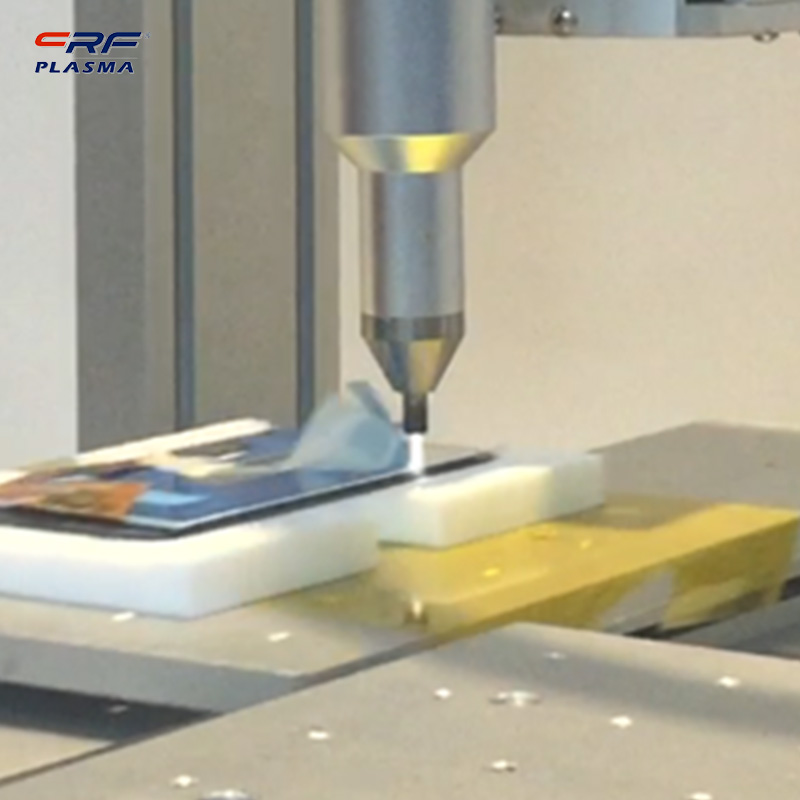 Aluminum is a common packaging material widely used in the food and pharmaceutical industries. If polyethylene glycol is used to deposit a reinforcing film on the surface of the aluminum sheet, it can prevent bacteria from adhering. Surface modification methods include chemical and physical methods. The chemical method is a wet method, and its technological operation is relatively complicated, and chemical reagents that pollute the human body and the environment are required.
Aluminum is a common packaging material widely used in the food and pharmaceutical industries. If polyethylene glycol is used to deposit a reinforcing film on the surface of the aluminum sheet, it can prevent bacteria from adhering. Surface modification methods include chemical and physical methods. The chemical method is a wet method, and its technological operation is relatively complicated, and chemical reagents that pollute the human body and the environment are required.
Low-temperature plasma technology opens up a new avenue for surface modification of metal biomaterials. It is a dry process with the advantages of easy operation and control, no pollution to the environment, and has received more and more attention in the fields of food and biomedicine. The PEG-like structure was grafted on the surface of the aluminum sheet by low-temperature plasma to form a thin film, and a large number of -CH-CH-O bonds were mainly accumulated on the surface; Greatly reduces bacterial adhesion.
Plasma-induced reactive species (such as free radicals, etc.) provide a mechanism for the recombination of surface di(ethylene glycol) methyl ether molecular fragments for reaction. The free radicals fall into the newly generated macromolecular network and can initiate a vigorous electronically excited in situ oxidation reaction. The ATR-FTIR analysis of the aluminum sheet macromolecular layer structure after plasma treatment shows that there is a strong absorption peak at 1583.07 cm, which is the characteristic absorption peak of the CO bond in the PEG structure, indicating that the deposited surface layer is PEG-like. structure. The absorption peak at 1780.21cm indicates that there is a C-O bond, which shows that a partial cross-linking reaction occurs while forming a PEG-like structure.
Compared with before modification, the bacterial adhesion of aluminum sheet after plasma treatment is greatly reduced after plasma treatment. This is because PEG structure is produced by cross-linking on the surface, and the PEG molecular chain has high flexibility. It can reduce the configurational freedom of macromolecular chains such as bacteria, and thus have the ability to resist bacterial adhesion. The surface morphology of the bacteria biofilm adsorbed on the aluminum sheet before modification and the sample analysis of the surface adsorption on the aluminum sheet after modification can be known that the surface of the modified aluminum sheet can effectively resist bacterial adsorption after plasma modification.
The elemental composition and chemical bond state on the surface of the aluminum sheet changed significantly after plasma treatment, and CO, OCO and O-CO-O bonds were formed on the surface layer. This indicates that plasma-induced reactive species (such as free radicals, etc.) provide a mechanism for the recombination of surface bis(ethylene glycol) methyl ether molecular fragments, which is different from non-oxidative reactions in which the formed free radicals fall into newly generated macromolecules. In the network, a vigorous electronically excited in-situ oxidation reaction can be initiated. The PEG-like structure deposited on the surface of the aluminum sheet can greatly reduce bacterial adhesion. Compared with before modification, bacterial adhesion is reduced by more than 80%, which has important application prospects in the food industry and medical transplantation.
Scan the QR code to read on your phone

TEL:0755-3367 3020 / 0755-3367 3019

E-mail:sales-sfi@sfi-crf.com

ADD:Mabao Industrial Zone, Huangpu, Baoan District, Shenzhen




